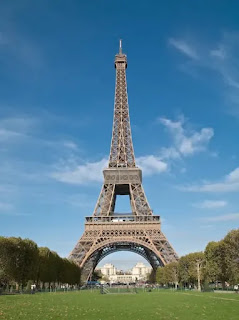In the heart of Paris, a testament to human ingenuity and architectural brilliance stands tall against the backdrop of the city of lights. The Eiffel Tower, an iconic symbol of France and a beacon of artistic prowess, has a rich history that transcends time.
The idea for the Eiffel Tower was conceived as part of the preparations for the 1889 Exposition Universelle, a world fair commemorating the 100th anniversary of the French Revolution. Gustave Eiffel, a renowned French engineer, was entrusted with the task of creating a monumental centerpiece for the event. Little did he know that his creation would become an enduring symbol of Paris and a global marvel.
Construction began in 1887, and over the next two years, more than 18,000 iron pieces were meticulously assembled to form the intricate lattice structure that defines the Eiffel Tower. It was a feat of engineering innovation, pushing the boundaries of what was thought possible at the time. The tower's unique design, a harmonious blend of form and function, left an indelible mark on the architectural landscape.
Upon its completion in 1889, the Eiffel Tower soared to a height of 324 meters, making it the tallest man-made structure in the world at that time. It was an immediate sensation, drawing visitors from far and wide who marveled at its towering presence and panoramic views of Paris.
As the years passed, the Eiffel Tower evolved from a symbol of industrial prowess to a cultural and artistic icon. It served as a backdrop for various historical events, witnessed the rise and fall of empires, and stood as a silent witness to the changing tides of the 20th century. During World War II, the Eiffel Tower played a role in thwarting Nazi communications, showcasing its unexpected wartime significance.
In the modern era, the Eiffel Tower remains a timeless symbol of Parisian elegance and a testament to the enduring spirit of human creativity. Millions of tourists ascend its iron lattices each year, capturing breathtaking views of the city below. The tower has also been featured in countless films, novels, and works of art, cementing its status as a cultural icon.
Beyond its aesthetic appeal, the Eiffel Tower stands as a reminder of the power of vision and determination. Gustave Eiffel's creation has not only withstood the test of time but has become a timeless emblem of human achievement. As the sun sets over the Seine, casting a golden glow on the iron structure, the Eiffel Tower continues to stand proudly, a symbol of triumph, innovation, and the enduring beauty of the City of Love.

